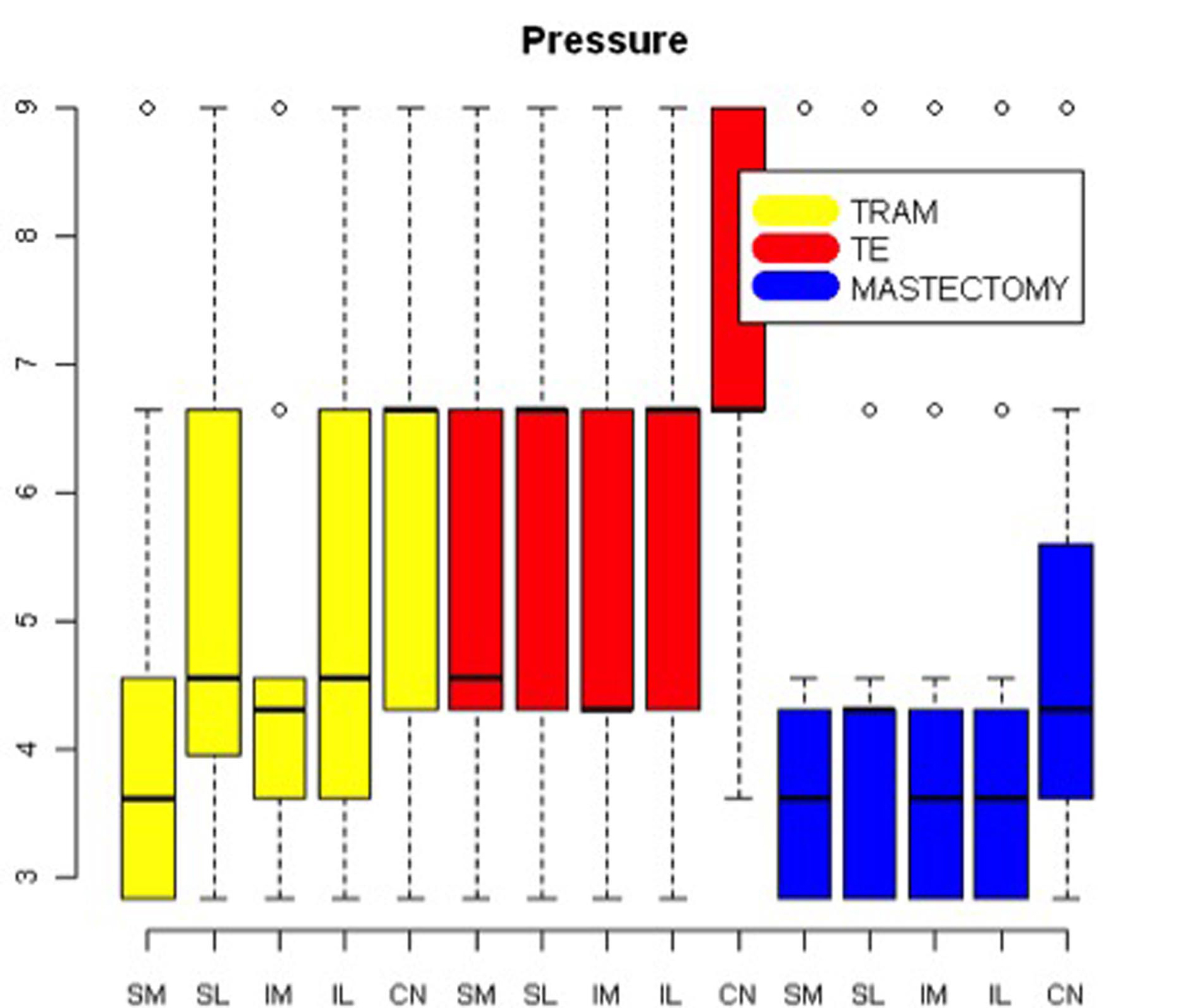|
|
|
|
|
Back to 2015 Annual Meeting
Quantification Of Breast Sensibility Following Postmastectomy Reconstruction: A Comparison Of Prosthetic And Autologous Techniques.
Shantanu N. Razdan, MD, MSPH, Anne Eaton, MS, Elyn Riedel, MA, Babak J. Mehrara, MD, Colleen M. McCarthy, MD, MS.
Memorial Sloan Kettering Cancer Center, New York, NY, USA.
Background: Breast reconstruction following mastectomy has been shown to have a positive effect on the psychological and emotional well being of women with breast cancer. To date, the focus of post mastectomy reconstruction has been on the restoration of breast form. Little attention has been given to the recovery of important sensory components in the reconstructed breast. The aims of this study were i) to compare the recovered sensibilities (touch, pressure, vibration, temperature and pain) between patients who had either mastectomy alone, tissue expander/implant based reconstruction or autologous reconstruction ii) to identify factors that may negatively impact reinnervation following breast reconstruction.
Methods: Consecutive patients who had either mastectomy alone, mastectomy with TE/implant based reconstruction, or mastectomy and autologous reconstruction at a tertiary cancer center were prospectively enrolled in the study. Sensory examination was performed at least 1 year post completion of surgery. Each reconstructed breast was divided into four quadrants (superomedial, superolateral, inferomedial, inferolateral) and one central area (diameter 4 cm) and sensations were noted for each quadrant. Statistical analysis was done using SAS 9.2 (SAS Institute Inc., Cary, NC) to compare the results between three groups. Role of confounding variables e.g. sentinel lymph node biopsy, axillary lymph node dissection and adjuvant therapies, was evaluated separately using multiple logistic regression.
Results: Total sample size was 150 patients (Autologous = 51, TE/Implant = 50, Mastectomy alone = 49). Mean duration from initial surgery to sensory exam was 3.8 years, respectively. Type of surgery was a significant predictor for return of all sensory functions (p<0.05). Patients who underwent mastectomy alone were the least likely to have return of objective sensation (p< 0.05). BMI and history of radiotherapy were significant negative predictors for return of pressure and vibration sensations (p<0.05). History of ALND and receipt of chemotherapy played no significant role in return of sensations. The highest proportion of patients felt all types of sensations in the superomedial quadrant.
Conclusion: Return of breast sensations following breast reconstruction is different depending on type of breast surgery performed. The superomedial quadrant is the most common location for return of sensations following breast reconstruction. This objective data will aid plastic surgeons in providing accurate information to patients contemplating on type of breast surgery to choose. Reliable information about postoperative return of sensation will also help in managing patients' preoperative expectations and in turn improving their postoperative satisfaction.
Legend
Figure 1: Box plot of lightest probe that evokes the perception of pressure by surgery type and breast quadrant (SM: Superomedial, SL: Superolateral, IM: Inferomedial, IL: Inferolateral, CN: Central). Lower values represent better return of function. Group medians are represented with horizontal bars and boxes span the lower and upper quartiles.

Back to 2015 Annual Meeting
|
|




